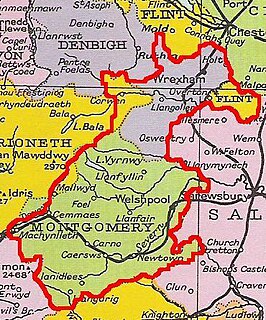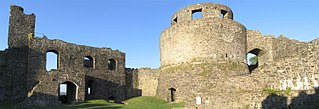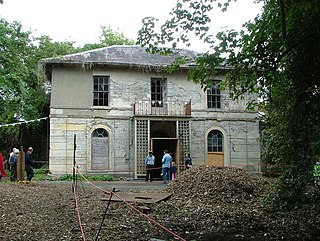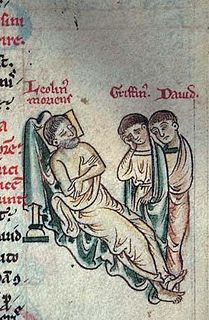
Llywelyn the Great, full name Llywelyn ap Iorwerth, was a King of Gwynedd in north Wales and eventually ruler of all Wales. By a combination of war and diplomacy he dominated Wales for 45 years.
Owain ap Gruffudd was King of Gwynedd, North Wales, from 1137 until his death in 1170, succeeding his father Gruffudd ap Cynan. He was called "Owain the Great" and the first to be styled "Prince of Wales". He is considered to be the most successful of all the North Welsh princes prior to his grandson, Llywelyn the Great. He became known as Owain Gwynedd to distinguish him from the contemporary king of Powys Wenwynwyn, Owain ap Gruffydd ap Maredudd, who became known as Owain Cyfeiliog.
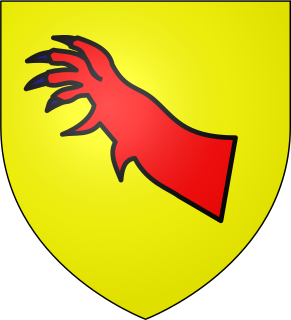
Gwenwynwyn ab Owain Cyfeiliog was the last major ruler of mid Wales before the completion of the Norman English invasion.

The Kingdom of Powys was a Welsh successor state, petty kingdom and principality that emerged during the Middle Ages following the end of Roman rule in Britain. It very roughly covered the top two thirds of the modern county of Powys and part of the West Midlands. More precisely, and based on the Romano-British tribal lands of the Ordovices in the west and the Cornovii in the east, its boundaries originally extended from the Cambrian Mountains in the west to include the modern West Midlands region of England in the east. The fertile river valleys of the Severn and Tern are found here, and this region is referred to in later Welsh literature as "the Paradise of Powys".
Anarawd ap Gruffydd was a Prince of Deheubarth in Southwest Wales.
Cadell ap Gruffydd was prince of the Kingdom of Deheubarth in Southwest Wales.
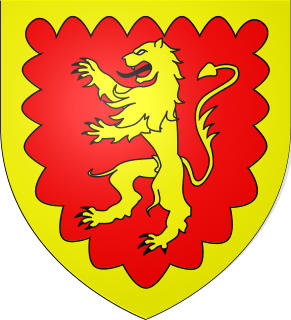
Rhys Gryg, real name Rhys ap Rhys, also known as Rhys Fychan was a Welsh prince who ruled part of the Kingdom of Deheubarth.
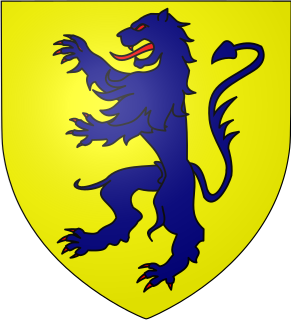
Cadwgan ap Bleddyn (1051–1111) was a prince of the Kingdom of Powys in eastern Wales.
Owain ap Cadwgan was a prince of Powys in eastern Wales. He is best known for his abduction of Nest, wife of Gerald of Windsor.
Cynddelw Brydydd Mawr, was the court poet of Madog ap Maredudd, Owain Gwynedd, and Dafydd ab Owain Gwynedd, and one of the most prominent Welsh poets of the 12th century.

Maelienydd, sometimes spelt Maeliennydd, was a cantref and lordship in east central Wales covering the area from the River Teme to Radnor Forest and the area around Llandrindod Wells. The area, which is mainly upland, is now in Powys. During the Middle Ages it was part of the region known as Rhwng Gwy a Hafren.
This article is about the particular significance of the century 1201–1300 to Wales and its people.
This article is about the particular significance of the century 1101 - 1200 to Wales and its people.

Elfael was one of a number of Welsh cantrefi occupying the region between the River Wye and river Severn, known as Rhwng Gwy a Hafren, in the early Middle Ages. It was divided into two commotes, Is Mynydd and Uwch Mynydd, separated by the chain of hills above Aberedw. In the late medieval period, it was a marcher lordship. However, after the Laws in Wales Act of 1535, it was one of the territorial units which went to make up the county of Radnorshire in 1536.

The history of Gwynedd in the High Middle Ages is a period in the History of Wales spanning the 11th through the 13th centuries. Gwynedd, located in the north of Wales, eventually became the most dominant of Welsh principalities during this period. Distinctive achievements in Gwynedd include further development of Medieval Welsh literature, particularly poets known as the Beirdd y Tywysogion associated with the court of Gwynedd; the reformation of bardic schools; and the continued development of Cyfraith Hywel. All three of these further contributed to the development of a Welsh national identity in the face of Anglo-Norman encroachment of Wales.
Iowerth Goch ap Maredudd, a minor Prince and nobleman of the Kingdom of Powys, was the illegitimate son of Maredudd ap Bleddyn and Cristin ferch Bledrus. The appellation "Goch", meaning red, probably referred to the colour of his hair.

Rhayader Castle is the remains of a motte-and-bailey castle in the town of Rhayader, Powys, Wales. The available documentary sources are not clear enough to distinguish between this site and the castle mound across the river and one or the other was probably built by Rhys ap Gruffydd, Prince of Deheubarth, in 1177. At that time the river formed the border between Gwrtheyrnion and the independent state of Buellt; the town of Rhayader is on the Gwrtheyrnion side of the river.



